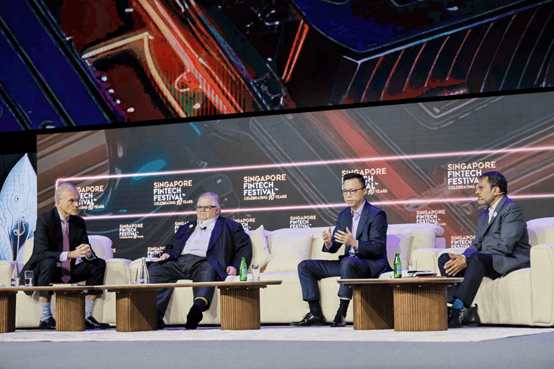

When leaders and organizations strive to motivate people to do their best work, they go to strategy and execution before fostering belonging and trust. In essence, they are trying to solve challenges backwards. This presents an interesting challenge for leaders and organizations who strive to foster healthy work cultures where people have the opportunity to thrive.
We no longer live in a society where our workforce is willing to purely exchange dollars for time. Creating a culture of belonging has become essential to creating diverse teams that not only get results, but feel appreciated, noticed and validated for who they are.
A culture of belonging doesn’t just happen, it must be fostered, created and maintained- from the top down. Employees have spoken and are clear about the importance of belonging. According to the 2023 American Psychological Association’s Work in America Workforce Survey, “94% of respondents reported that it’s somewhat or very important to them that their workplace be somewhere they feel they belong.”
There are many factors that contribute to a sense of belonging in the workplace. Leaders of organization must be willing to face the difficult truths of where belonging is missing. Unfortunately, that same survey from the APA reports that “Close to one-third (30%) of workers said they feel their workplace does not support them because of an aspect of their identity, such as race/ethnicity, gender, sexual orientation, ability status, age, etc.
These hard truths are a wakeup call for organizations to initiate and maintain action when it comes to Diversity, Equity, Inclusion & Belonging (DEI&B)
The Byproducts of Belonging
While it is easier for leaders to turn a blind eye to the need for DEI&B initiatives, those that do may find themselves left behind. A common misconception about these initiatives is that they are just about people FEELING good. While yes, we want people to feel good at work, the results go beyond just a moment of satisfaction and engagement.
According to Deloitte, organizations that place emphasis and importance on DEI&B initiatives experience 39% higher customer satisfaction rates and 22% lower turnover rates. The cost of turnover in our current economy is massive. It estimated that it costs a company ⅓ of an employee’s salary to replace them with U.S. companies losing a trillion dollars annually to turnover.
However, if the motivation for DEI&B is purely financial, it’s lacking integrity and authenticity. While the stats may convince the C-Suite to invest in initiatives, it has to be reflected throughout the organization’s practices and behaviors, not just checked off a list of “things we should do.”
People are paying attention, and organizations are getting recognized for their efforts in these areas. The U.S. accounted for nearly half of DEI spending ($3.4 billion) and is targeted to reach $8 billion in 2027.
The HOW of Belonging
What does this all look like “on the court” and what do companies need to do to get started or continue evolving with the needs of the workforce in front of them?
Here are a few strategies that begin to shape and/or support efforts that foster Diversity, Equity, Inclusion & Belonging:
- Creating a clear and communication leadership profile. What does it mean to be a leader in your organization? How will you foster and reflect a culture of inclusion and belonging? What behaviors are expected of leaders and what professional development opportunities will you provide leaders? If you just expect leaders to jump on the belonging train without first building the tracks, train and schedule, you can’t expect much movement. This is also not an issue solved with a “one and done” training. In fact TRAINING isn’t solely the answer; although it may be part of it. This leadership profile must be included in job descriptions, company value statements and must be accompanied by clear benchmarks to measure its effectiveness.
- Regularly survey employees…and ask the tough questions. You are never going to know where the gaps are, and if they are being filled, if you don’t ask the people you are trying to elevate. These can be pulse surveys or more elaborate annual surveys, but it’s important to not only be asking people IF they feel a sense of belonging but to give you specific examples of where they experience it and where they don’t. Soliciting specific suggestions is also a great way to serve your workforce (of course only IF you plan to enact some of them!).
- Look back to plan ahead. What policies, procedures and practices need to be refreshed or reviewed in light of DEI&B? This may be a several months long or year long effort that an external consultant or assigned internal group can champion. The benefit of getting an external team to do more of a DEI&B audit is uncovering blind spots that internal leaders may not always see.
- After identifying gaps, articulate OKRs and assign owners. Without ownership, DEI&B initiatives fall to the waste side. Whether there is a specific role managing initiatives or its part of a learning or OD role, DEI&B can only be stewarded through ownership and accountability.
- Invite individual contributors to the table. Don’t leave it all up to the formal hierarchy of leadership. Create a voluntary diversity committee that can be the voice of the people. You may want to tap specific people who represent minority groups. Yes, your diversity committee should be diverse! Allow this group to bring forth ideas and be willing to try them. Set expectations from the start about what can and can’t be done and empower this group to lead and represent your workforce.
Creating diverse workplaces that give people a sense of belonging is a forever effort. As society and the world around us change, new needs will emerge. The key is to truly keep listening, challenging assumptions and being willing to consciously take action to ensure that each and every person feels as if they are in the right place, today and every day.
Author Bio:
Stephanie Licata is the Learning Strategist at Cloverleaf whose whole career has been around training programs. With nearly two decades of combined management, leadership development, and education experience, she is a multi-faceted learning, leadership, and organizational development professional, training specialist, and ICF Certified Coach with a Master’s in Organizational psychology from Columbia University. Her signature program is a Coaching Skills for Leaders Certification for those who manage people. From the C-Suite to the first time manager, thousands of leaders have been through this lean and digestible program. With short bursts of skill training, leaders learn and practice leadership communication skills right away. In addition, she provides teams with executive/leadership coaching for all sizes of organizations.


